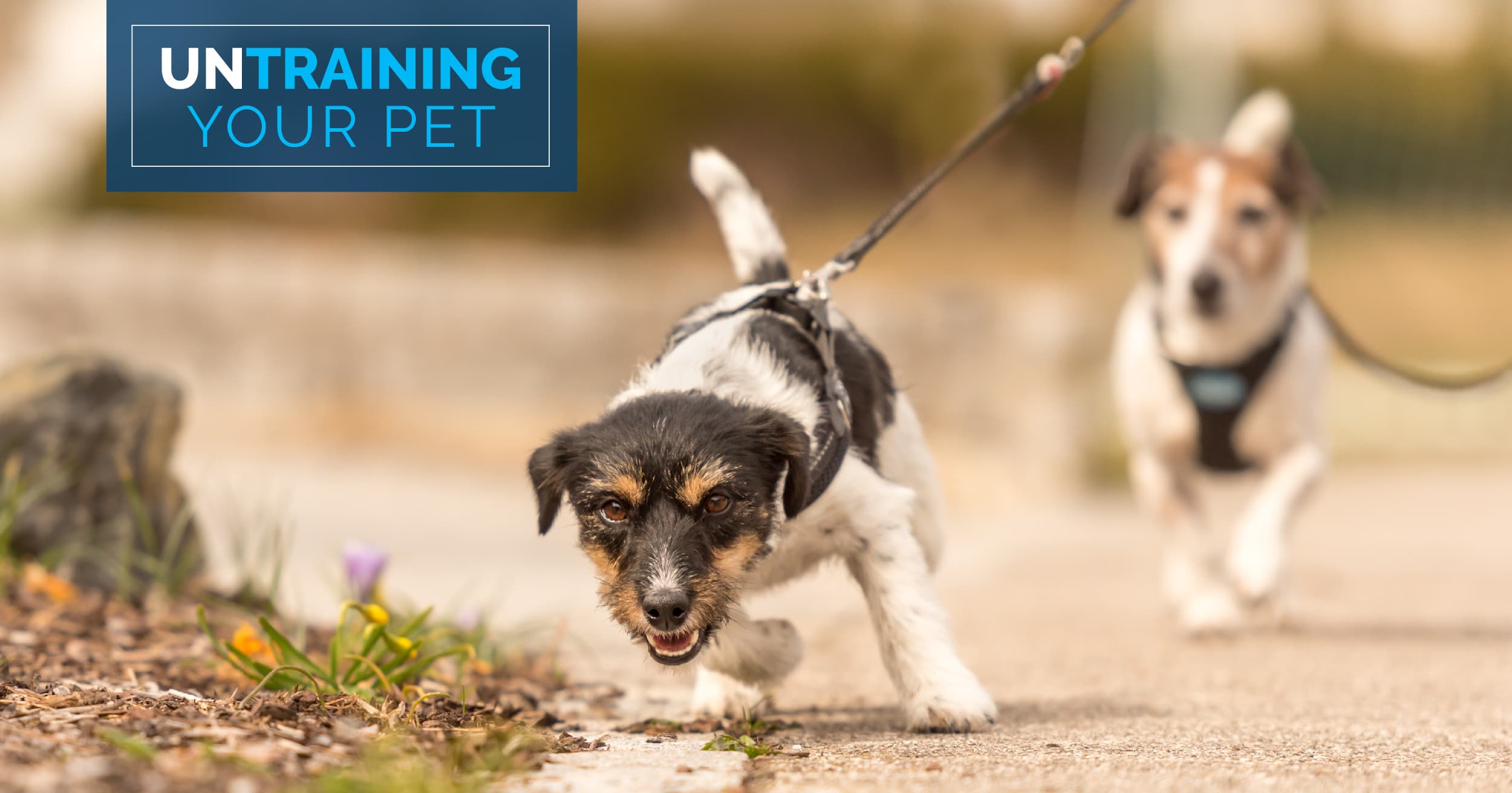
Welcome to our “Untraining Your Pet” series, where we help you “untrain” your pet from those naughty or annoying bad habits and get them back to being the goodest boys and girls.
If you feel like you’re trying to hold back a team of runaway reindeer when you’re walking your dog, you’re not alone. Leash pulling is a common issue for dogs and their pet parents. So here are some tips for training your dog to walk on a loose leash that will hopefully make going for a walk a much more enjoyable experience for both of you.
Keep Them Harnessed and Reined In
You wouldn’t use a draft horse’s harness on a Shetland pony, and the same rule applies for fitting a harness and leash to your dog. Make sure you’re using the correct harness for your dog’s size. You can check which size of harness to purchase by measuring your dog’s weight and girth. The harness should not cause their neck or shoulders to bunch up, and you should be able to comfortably fit two fingers between the harness and your dog’s body. A harness is the safest option while your dog is learning to walk on a loose leash, because a leash attached to a collar could cause your dog to choke if they pull on it.
While your dog is in leash-etiquette training, it’s better to use a shorter leash so you have more control. Take into account your height and your dog’s height so that you’re both comfortable while you’re out walking. Once your dog has mastered loose-leash walking you can use a longer leash, as long as there aren’t any leash-length rules where you’re walking. For example, some nature trails limit leash length to 6 feet.
Stop. Go. Stop. Go (and Repeat).
Once you’ve checked that you have the correct harness/leash set-up, it’s time to tackle the pulling problem. It’s a good idea to start training inside or somewhere where there are fewer distractions (e.g., a squirrel running past). Start by having your dog stand by your side with a loose leash. Reward them if they stay still next to you. Then move forward one step and if they “stay” without pulling, give them another reward. Keep repeating the process around the house, increasing the number of steps you take and rewarding them when the leash stays loose.
If your dog does start pulling, stop moving and wait until you feel the leash loosen a little and praise them immediately. You want them to learn that a loose leash is the goal and they are rewarded when it stays loose. When they come back to you, give them lots of praise and rewards and then start walking again. Stop if they start pulling and repeat the reward process. Once they’ve mastered walking around the house on a loose leash, venture outside where there are more distractions. You may have to repeat the “stop, go” process again, but hopefully they will soon remember that a loose leash means rewards.
Who’s a Good Dog?
Once your dog starts walking without pulling, it’s important to keep rewarding their good behavior. Don’t just reward them when they pull and then stop — also reward them when they walk well beside you. This keeps reinforcing that a loose leash leads to lots of lovin’.
And if your dog wants to stop and smell the roses or a mailbox or another dog, let them. Dogs use scent to understand their environment and to “talk” or send “messages” to each other. It’s a natural behavior and should be encouraged on your walks, unless either dog is showing signs of aggression or stress.
Like most bad habits, leash pulling can take a while to overcome. But with persistence, patience and praise, hopefully you won’t be pulled around the block anymore. If you do continue to have problems with leash pulling, ask your veterinarian for advice or consult a professional trainer.
RELATED POST: Untraining Your Pet: No More Jumping on People
